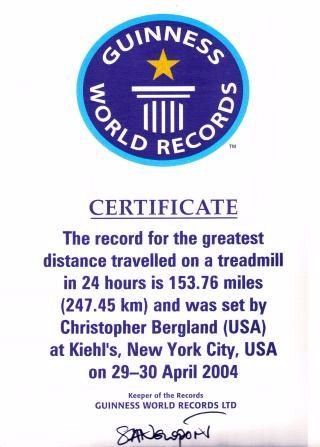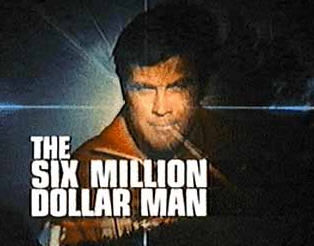Identity
Role Models Who Break the Mold Fortify Identity Construction
How do eclectic role models facilitate identity construction during adolescence?
Posted July 5, 2019
Yesterday morning, Independence Day 2019 began for me with a ping from Google Alerts about a new study from Finland. "'She Is Where I'd Want to Be in My Career': Youth Athletes' Role Models and Their Implications for Career and Identity Construction," was published online ahead of print July 4 in the journal Psychology of Sport and Exercise. This paper (Ronkainen et al., 2019) "explores the patterns of role model selection by adolescent student-athletes and the narrative maps these role models provide for self-construction."
The researchers found that "Finnish youth athletes are inspired by athlete role models whose lives are not completely constituted by performance narratives of elite sport." This paper has two other noteworthy highlights: First, young "pre-elite" female student-athletes in Finland who responded to a survey appeared to create more detailed "narrative maps" of identity construction than their male counterparts. Second, the Finnish youth athletes who participated in this research also tended to "reject totalitarian ideologies of elite sport." This research examined other aspects of role models during adolescence concerning gender and familial role models during identity construction.
Coincidentally, my adolescent daughter (who is a California-based "youth athlete") is currently in Finland visiting extended family with her mom—who is a Finn and embodies "sisu" from head to toe. (For more on sisu, check out this post by fellow-blogger Emma Seppälä: "An Ultramarathon Runner's Secret to Mental Toughness.")
During a text exchange with my daughter yesterday, I explained the gist of this new "role models & self-construction" study by Noora Ronkainen and colleagues in the department of psychology at the University of Jyväskylä. Then I asked her, "Can you name five athletes, singers, or other public figures you admire and consider role models?" My daughter said her summer of 2019 "top five" role models are (1) Taylor Swift, (2) Lady Gaga, (3) Megan Rapinoe, (4) Cori "Coco" Gauff, and (5) Kamala Harris.
After rattling off her role models, my daughter asked who inspired me when I was growing up and beginning to compete as a student-athlete decades ago. I responded by saying that I had so many role models during adolescence that it was impossible to come up with a "Top Five" list off the top of my head. But, I told my daughter I'd think about it overnight, write a blog post about "identity constructing" adolescent role models in the morning, and text her a link to this post today.
Last night, I tossed and turned as a floodgate of long-forgotten memories about dozens of role models from my adolescence (1976-1985) filled my head. While I was still half asleep, I curated an index of role models from my youth who are like indelible signposts on the road map of my identity self-construction. With every adolescent role model I emulated in day-to-day life, and as a rookie student-athlete, I realize there's a certain je ne sais quoi that's difficult to articulate. Therefore, I've included some YouTube links so you can watch these iconic characters in action—if you're generationally unfamiliar with their famous '70s/'80s personas.
Before sharing a few specific role models from my youth that helped me create a detailed "narrative map" on my way to becoming a Guinness World Record athlete—please take a few moments to think about your adolescence (roughly ages 10-19) and how eclectic role models may have affected the trajectory of your life. Obviously, when, where, and "who" someone is born profoundly influences which public figures will resonate with that individual and become role models during his or her adolescence.
How did when, where, and to whom I was born influence my role model selection during adolescence?

Although my family originally hails from Norway, I was born on the Upper East Side of Manhattan in 1966. Because my father always romanticized the adventurous spirit of the Vikings, the first role models that got etched into my psyche were founded on Norse mythology. When I became an ultra-endurance athlete and began traveling around the world to compete in Ironman triathlons as an adult, the mythic aspects of my heritage got woven into a "narrative map" rooted in classic archetypes and the so-called "hero's journey." Regardless of family origins, all of Joseph Campbell's insights about "The Power of Myth" are (in my opinion) timeless and universal.
That said, because my adolescence began in the mid-1970s, the pop culture icons and superstars of this era created the fundamental building blocks of my identity construction. Again, when and where someone is born makes a huge difference regarding the specific role models that will inspire each individual during adolescence.
Blogger's note: Below is a list of role models from my adolescence that influenced the narrative map of my "self-construction." Yes. I broke the rules when making my "Top Five" list of role models from adolescence; this list includes ten people. The reason I didn't truncate this more is that so many of my role models are singers—and their songs became anthems that created a life-changing soundtrack during self-identity construction—I couldn't bring myself to cut them (or their music) from the list.
1. Björn Borg and Chris Evert

As a young tennis player, I had posters of Björn Borg on my bedroom walls, dressed like him in Fila apparel, and wore a terry-cloth headband (just like his) religiously.
I deeply admired Borg's calm, cool, and collected demeanor; especially in contrast to the volatility of other "anti-hero" players from this era like Ilie Năstase, Jimmy Connors, and John "SuperBrat" McEnroe. The Swedish "Ice Man" always exhibited unflappable grace under pressure; he taught me invaluable lessons about sportsmanlike conduct. Chris Evert was another role model for me as a young athlete. I copied her two-handed backhand and mirrored her "robotic" groundstrokes whenever I practiced against a backboard.
2. "The Six Million Dollar Man" and "The Bionic Woman"

Speaking of robotic, as an adolescent, I was obsessed with the awesomeness of the Six Million Dollar Man and the Bionic Woman. I idolized them equally in a way that seemed to transcend "gender identity." There were traits in both Steve Austin (played by Lee Majors) and Jaime Sommers (played by Lindsay Wagner) that were engraved into the narrative maps of my psyche when I was building my self-identity as a young athlete striving to optimize my sports performance.
Because these bionic TV characters seemed down to earth and wore contemporary street clothes (without ever changing into a spandex "superhero" costume), it was easy to imagine them as real-life role models.
As an adolescent tween, I strongly identified with the fact that my "hero" Jaime Sommers was a tennis pro before she became the Bionic Woman and that her "day job" was being a junior high school teacher in Ojai, California.
3. Elton John and Billie Jean King
One of my all-time favorite quotes is from Billie Jean King, who famously said: "Be bold. If you're going to make an error, make a doozy, and don't be afraid to hit the ball." When she played Bobby Riggs during the notorious "Battle of the Sexes" match in 1973 at the Houston Astrodome, my entire family (along with 90 million people worldwide) was glued to our television set. As a kid, it was reaffirming to see both mom and dad rooting for BJK to win the match and celebrating her "gender equality" triumph as a family.
Long before Elton John or Billie Jean King had officially come out of the closet, as an adolescent student-athlete, I saw something in their boldness and "free to be you and me" spirit that inspired me. As trailblazers in the LGBTQ community, I credit these two role models with making my decision to compete as an openly gay athlete in the early-1990s much easier. BJK paved the way for me in terms of an international corporate athletic sponsor viewing my sexual orientation as an asset to their global "Spirit of Adventure" marketing/branding PR campaign.
Elton John and Bernie Taupin co-wrote the song "Philadelphia Freedom" as a favor to Billie Jean King and her tennis team called the "Philadelphia Freedomers." The original vinyl 45 for this song has the inscription: “With love to B.J.K. and the sound of Philadelphia.” As a young athlete, the lyrics and vibe of this song gave me the courage not to "butch it up" in an attempt to pass as being straight both on and off the court.
4. Diana Ross and Donna Summer
In the late-1970s, when people started burning R&B dance records in sports stadiums and wearing "disco sucks" t-shirts, I always interpreted the subtext of this "demolition" message as having a tinge of racial bias and homophobia. To combat this hateful rhetoric, I drew incredible strength from the "disco divas" of the era. Diana Ross and Donna Summer (along with Gloria Gaynor) inspired me to declare "I Am What I Am" back then. And today, the upbeat tempo of their music continues to motivate me to power through vigorous (high-intensity interval training) HIIT a few times a week.
During the peak of the AIDS pandemic in the late-1980s, when I lost so many friends and mentors, the lyrics to MacArthur Park (1978) from a decade earlier inspired me to "take my life into my hands and use it" and to push myself harder as an athlete in honor of my peers who were no longer alive to seize the day.
5. Billy Idol and Madonna
When I was at boarding school in the early-1980s, MTV had just been launched as a "revolutionary" new cable channel. In my dormitory, there was a common area with a small black & white TV with the first cable box I'd ever seen attached to it. Because the "Video Killed the Radio Star" medium was so new, there were only a few dozen videos in heavy rotation on MTV at the time.
Of all the early "video stars," Billy Idol and Madonna inspired me the most throughout adolescence. I worshiped both of them for being counterculture rebels and having guts. In high school, I used a lot of extra-strength styling gel and spiked my hair to look like Billy Idol on the Don't Stop album cover. During my freshman year at Hampshire College in 1984, I grew my hair into a messy, dirty-blond shag and looked like the Birkenstock-wearing version of a Madonna "wannabe" on the cover of Like a Virgin.
Even though I'm in my 50s now, every time "Dancing with Myself" or "Borderline" comes on the radio or a playlist at the gym, these songs never fail to make me feel seventeen again and inspire me to push harder against my limits.
If you created a narrative map based on the role models who influenced your identity construction during adolescence, who'd be on your "Top Five" list?
References
Noora J. Ronkainen, Tatiana V. Ryba, Harri Selänne. “She Is Where I’d Want to Be in My Career”: Youth Athletes’ Role Models and Their Implications for Career and Identity Construction." Psychology of Sport and Exercise (First published online: July 4, 2019) DOI: 10.1016/j.psychsport.2019.101562




